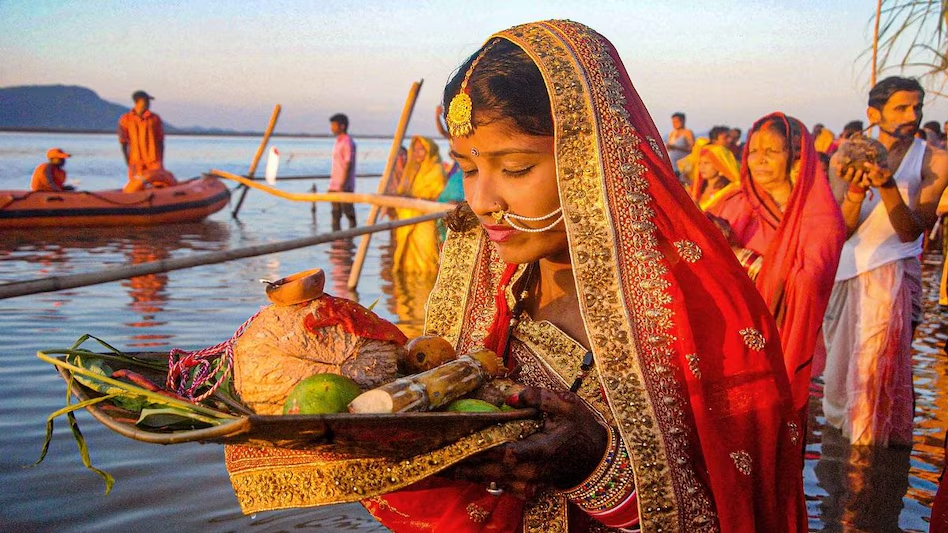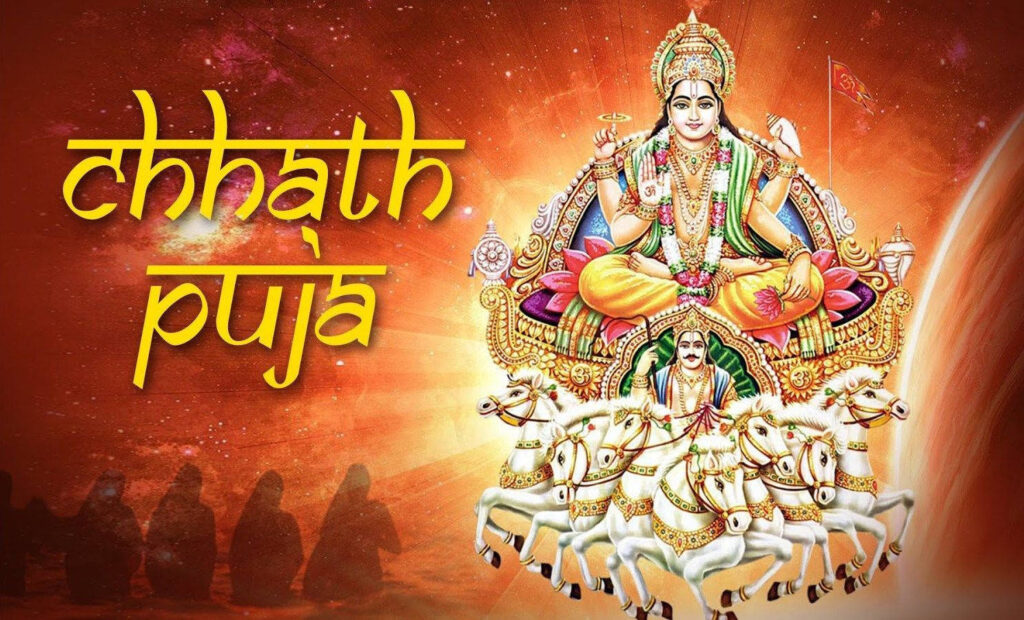Introduction to Chhath Puja: A Festival of Devotion and Gratitude
Chhath Puja is a deeply spiritual Hindu festival dedicated to worshipping the Sun God, Surya, and his sister, Chhathi Maiya. Celebrated with immense devotion, this festival embodies gratitude, reverence, and purity. It is observed primarily in the Indian states of Bihar, Jharkhand, Uttar Pradesh, and certain regions of Nepal, where devotees honor the Sun for sustaining life on Earth. Chhath Puja is unique because it is one of the few Hindu festivals focused solely on nature worship, emphasizing a harmonious relationship between humans and the environment.
Table of Contents:
- The Origin and Significance of Chhath Puja
- When and Where is Chhath Puja Celebrated?
- Rituals and Traditions of Chhath Puja
- The Four-Day Observance: Step-by-Step Guide to Chhath Puja
- Why Devotees Worship the Sun God During Chhath Puja
- Unique Offerings and Prasad of Chhath Puja
- Environmental and Cultural Importance of Chhath Puja
- Chhath Puja in Different Parts of India
- How to Participate in Chhath Puja Safely
- FAQs about Chhath Puja
The Origin and Significance of Chhath Puja

The origins of Chhath Puja are deeply rooted in ancient Hindu scriptures and mythology. Some legends connect it to the Mahabharata, where Draupadi and the Pandavas are said to have performed rituals similar to Chhath to overcome obstacles. Another popular belief is that Chhath Puja was performed by Lord Rama and Sita to honor the Sun God upon their return to Ayodhya. The festival’s significance lies in seeking the blessings of Surya for health, prosperity, and well-being, as well as offering thanks for life’s essential resources.
When and Where is Chhath Puja Celebrated?
Chhath Puja typically falls on the sixth day (Shashthi) after Diwali, during the lunar month of Kartik (October-November). Celebrated mainly in Bihar, Jharkhand, and parts of Uttar Pradesh, this festival is also gaining popularity in cities across India due to migration. Devotees set up ghats (riverbanks) for the rituals, often by the Ganga, Kosi, or other local rivers, lakes, or ponds, where the atmosphere is filled with devotional songs and prayers as people gather to pay homage to the Sun.
Rituals and Traditions of Chhath Puja
Chhath Puja rituals are rigorous and involve intense physical and spiritual discipline. The puja spans four days, during which devotees observe fasting, abstain from consuming certain foods, and avoid contact with items considered impure. The rituals include holy baths, offering Arghya (water and milk) to the setting and rising sun, and staying immersed in water for extended periods as a gesture of reverence. This stringent observance is seen as a way to cleanse both the body and soul.
The Four-Day Observance: Step-by-Step Guide to Chhath Puja
- Nahay Khay – The first day of Chhath Puja begins with a cleansing ritual, where devotees bathe in a holy river or water body and prepare a traditional meal.
- Kharna – On the second day, devotees fast from sunrise to sunset, breaking the fast in the evening with prasad made from jaggery, rice, and milk. After this meal, they begin a 36-hour nirjala vrat (fast without water).
- Sandhya Arghya – On the third day, devotees offer the first Arghya (evening offering) to the setting sun at a riverbank or ghat, along with fruits, sugarcane, and other symbolic offerings.
- Usha Arghya – The fourth and final day is marked by an early-morning offering to the rising sun, after which devotees break their fast and share prasad with family and friends.
Why Devotees Worship the Sun God During Chhath Puja

In Hindu culture, the Sun God is believed to be a powerful life force and a healer. Worshiping Surya during Chhath Puja is seen as a way to seek his blessings for strength, good health, and prosperity. The Sun is also considered a witness to all life on Earth, and thus, devotees believe that Surya’s blessings lead to spiritual growth, purification, and protection from ailments. Chhath Puja is a time when devotees acknowledge their dependency on the Sun, expressing gratitude for its life-giving energy.
Unique Offerings and Prasad of Chhath Puja
The prasad offerings during Chhath Puja are unique to this festival, often including thekua (a traditional sweet made from wheat flour, jaggery, and coconut), rice laddus, fruits, and sugarcane. These offerings are prepared with utmost devotion and cleanliness, symbolizing the purity of the occasion. The use of natural ingredients and handmade prasad reflects a connection to simplicity and traditional methods. These offerings are later shared among family, neighbors, and friends, strengthening communal bonds.
Environmental and Cultural Importance of Chhath Puja
Chhath Puja not only has religious significance but also highlights environmental and ecological values. The rituals are centered around rivers and natural water bodies, fostering an appreciation for water resources and cleanliness. By gathering at riversides, devotees emphasize the importance of water conservation and a balanced ecosystem. Culturally, Chhath Puja brings communities together, preserving ancient traditions that strengthen family bonds, communal harmony, and respect for nature.
Chhath Puja in Different Parts of India
While Chhath Puja is most popular in Bihar and Jharkhand, the festival has spread to different parts of India and even abroad, thanks to the widespread migration of people from these regions. In urban areas like Delhi, Mumbai, and Kolkata, dedicated ghats are set up, and public gatherings are organized to accommodate those wishing to observe Chhath. Additionally, countries like Nepal and Mauritius, with significant Indian diasporas, celebrate Chhath with similar enthusiasm, making it a global expression of devotion and tradition.
How to Participate in Chhath Puja Safely
If you’re new to Chhath Puja and want to participate, it’s essential to do so respectfully and safely. Always follow local guidelines and use designated ghats or water bodies to prevent environmental damage. Take care not to leave any waste behind and avoid polluting the water. Ensure personal safety by maintaining a safe distance in crowded areas, especially if attending large gatherings. Participating with awareness and respect will enrich your experience of this beautiful festival and its devotion-filled rituals. or click here to read more blogs like this
FAQs about Chhath Puja
- What is Chhath Puja and why is it celebrated?
Chhath Puja is a Hindu festival dedicated to honoring the Sun God (Surya) and Chhathi Maiya as a way to show gratitude for sustaining life on Earth. Devotees seek blessings for health, prosperity, and well-being through fasting and worship. - When does Chhath Puja take place?
Chhath Puja is observed on the sixth day after Diwali, usually in October or November, depending on the Hindu lunar calendar. - What are the main rituals of Chhath Puja?
The festival spans four days, involving holy baths, fasting, and offering Arghya (water and prayers) to the setting and rising sun. Devotees follow a strict discipline, including a 36-hour waterless fast as a form of devotion and purification. - Why do devotees worship the Sun God during Chhath Puja?
In Hindu belief, the Sun God is a powerful source of life and health. Worshiping the Sun is believed to grant strength, vitality, and protection, as well as spiritual purification. - What are the traditional offerings or prasad for Chhath Puja?
The main prasad includes thekua (a sweet made from wheat, jaggery, and coconut), fruits, and sugarcane. These offerings are prepared with great care and shared among family and friends as a symbol of community and gratitude.

